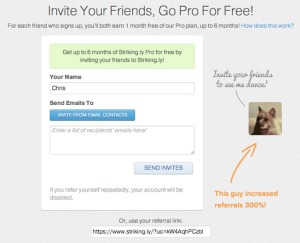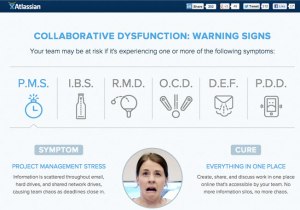How to Build an Email Marketing Machine: Gangnam Style
February 13, 2013
By, Chris Mexton Reposted from KissMetrics
You’d be pretty hard pressed to argue that PSY’s Gangnam Stylehasn’t been a runaway marketing success. With over 1 BILLIONviews on YouTube, Gangnam Style has firmly planted itself in our collective psyche.

Love it or hate it, I think we all can agree that we want that sort of marketing success for our businesses. One of the things that makes the best online marketers successful is their ability to creatively draw on marketing tactics and resources from many domains, not just the world of online business. The question you should ask yourself as an online marketer is: “Is there anything we can learn from the success of Gangnam Style?”
As it happens, K-pop (an abbreviation of Korean pop), which is South Korea’s pop music industry, is pretty darn savvy when it comes to marketing, and there is a lot that goes into forming a K-pop supergroup. PSY’s success is doubly interesting as he is not your typical K-pop artist.
After reading a ton about the world of K-pop, there are a number of ideas we can glean from it.
Here are three things I’ll bet you don’t know about the K-pop industry and what you can do with this knowledge to build your own email marketing machine.
1. Measure Absolutely Everything
The Verge recently did a massive feature on K-pop. One of the most interesting aspects of the article about it is the discussion ofCulture Technology. Culture Technology refers to the way in which South Korea’s largest record labels attempt to design K-pop bands.
In their eyes, a K-pop group is not just a band but a brand. When auditioning for a new band, the top record labels run software simulations on potential group members to see how their voice and appearance will change in the next 3-7 years. They narrow down the applicants to a group they feel will be successful, and then they teach the group members to sing, dance, and even speak foreign languages.
In many cases, bands consist of 10+ members, allowing the labels to optimize and split roles, particularly when the band performs overseas, for example.
Why do they do this? To maximize their chance for growth and long term success. There’s no business like show business, and K-pop clearly knows how to run the show!
What is most interesting about this is that it nicely correlates with running a successful online business. The key lesson here is to measure everything.
When it comes to our email marketing campaigns, there is a lot we can do to ensure we get accurate, actionable data.
In my experience, the best people in the email marketing biz ask themselves: “Are these emails driving the actions I want? Are they increasing my customer lifetime value?”
Not only should we pay attention to deliverability, opens and clicks, but also follow through, which customers actually convert, and which, ultimately, turn out to be the most profitable.
Only with this sort of granularity can you understand whichcustomer cohorts are best to go after, where you can improve your email marketing content, and where you should invest your marketing budget.
A popular email remarketing tactic is to collect customers’ email addresses and send out a series of educational emails in order to build trust prior to making a sale. An extremely effective tactic, it does mean that, for most SaaS businesses, you will end up sending your customers somewhere between 5-18 emails from the time they start receiving your educational email campaign to the time they become a paying customer. (Email remarketing involves sending emails to customers based on what they do or don’t do on your website.)
That’s quite a lot of email, meaning you have a lot of room to optimize. Are customers engaging with your educational content? Are your open rates increasing? Could you get more action from your potential customers with a different call to action or a “Big Orange Button”? Do customers coming from this channel stick around longer than customers you acquire from other channels?
These are the questions you want to be answering if you plan to dominate your email marketing.
One of the most effective ways to know what on earth is going on is to tag your outgoing campaign links with as much detail as possible.
Both Google Analytics and products like KISSmetrics allow you to use URL parameters quickly and easily to see specifically what a customer is doing.
Here’s a screenshot from one of KISSmetrics’ epic infographicson customer lifecycle tracking:
For Google Analytics, you can do the same using UTM codes. Then, at a glance, you can see which campaign or variation is converting most effectively. And, with a little tweaking, you can drill down deeper and see sub-cohorts. (Did the user originally come via a Google search, Twitter, or some other channel?)
Using KISSmetrics’ revenue tracking, you can go even further and understand exactly how your emails impact a customer’s journey from initial visit to purchase. With that information, you will be able to determine if a campaign is actively working to increase your customer lifetime value over the long term.
Key takeaway: If you don’t have this sort of granularity over your email marketing campaigns, set it up! It’s not too hard to do if youfollow this great guide.
2. Test the Unexpected
In the world of highly-tuned K-pop bands, no one ever would have expected that Vivienne Westwood-wearing, horse-dancing PSY’s Gangnam Style would become the phenomenon that it has.
In fact, I’m not sure anyone anywhere would have expected it!
Here are just a few unexpected things about PSY and Gangnam Style that initially made the song’s success in either South Korea or the rest of the world unlikely:
- He was educated in the US (he went to Berkley School of Music), and he wasn’t part of the highly-measured K-pop process outlined above.
- PSY’s sense of style is unique and certainly different from most mainstream artists, in any genre.
- Gangnam Style was released on YouTube without any copyright restrictions.
- The video is, in many ways, completely bizarre.
- The song is in Korean!
However, with a bit of reflection, we can see that all of those things have contributed to the genius and addictive nature of the song.
The point here is that, often, the unexpected works best.
One of the masters of this domain is content marketer, Matthew Inman of The Oatmeal. Take this title from a sign-up form on his blog:
Now that’s how you put the unexpected to work. The first thought that runs through your head is “Ugh, what?” That is quickly followed by an almost uncontrollable urge to take action and find out more. Who wouldn’t click-through on that form?
Embracing creativity when it comes to any form of online marketing is essential. For every 10 crazy A/B tests you do, it’s likely that only one will give you significant gains. But, oh boy, will they be worth it.
Take the team at Strikingly.com. They’ve got a referral system they use to encourage engagement and source new customers. Having proved that the concept worked well for their target market, they began testing different concepts.
Want to see the change that increased referrals by 100%?
That’s right, a dancing cat nailed it! If they weren’t experimenting with all sorts of ideas, they wouldn’t have found this winner.
When it comes to email marketing campaigns, the best examples of “quirky” content have, in fact, virtually become legend.
Take this classic example from Zappos below. Their post-purchase campaign informing customers that their order has been automatically upgraded to expedited shipping is a beautiful example of creativity at work.
Not only is the concept sound, but the copy and delivery here give the email a real kick. This email was frequently blogged about and mentioned online. It takes only a quick Google search to find plenty of customers praising Zappos’ awesome customer service.
A good approach for coming up with winning campaign content is to try and change the way you tackle an extremely common campaign – something that is usually boring and completely run-of-the-mill.
Another, even more famous, example comes from Derek Sivers. Take a read:
Derek could have simply written: “Your order status has been updated and your order has been shipped,” but instead he wrote this!
As Derek mentioned in his book, Anything You Want, googling “private CD Baby jet” will return many thousands of results (900,000 for me), which is evidence of the impact of his spur-of-the-moment creativity.
If this example doesn’t provide the business case for A/B testing your transactional emails, then nothing will.
Key takeaway: Get creative, test the unexpected, and create some buzz!
3. Find Your Company’s Voice and Be Yourself
From the streets of Seoul to The Ellen DeGeneres Show, PSY iseverywhere.
Partly thanks to the unconventional nature of PSY’s wardrobe and dance, they have helped him shape his brand and have been a huge part of the continued success of his marketing juggernaut.
Once you’ve begun testing and started to find what works for your business, you need to stick with it and give your email campaigns a unique voice – you need to rock your own attitude.
The Zappos example above contributes perfectly to their reputation for insanely awesome customer service. This is something they’ve built up through consistent communication with their customers and by constantly impressing people with their attitude.
Remember: great marketing is about connecting with customers. You need to be personable and consistent and build trust over time.
Dropbox injects this sort of personality into all of their customer communication. This particular example is sent to customers who sign up but then do not set up Dropbox within a few days. Like their website, the product itself, and their updates, this campaign is clean and lighthearted. It not only drives the correct action from their customers (install Dropbox!) but contributes to customers’ perception of Dropbox as a business.
Another example of consistency of attitude is AppSumo. Much loved by their customers, Noah Kagan and the team have done an awesome job of building a loyal fan base. A huge part of this is off the back of the way they communicate on their website, in their emails, and even in overlooked places…like this awesome unsubscribe page.
A third and final example comes from Atlassian. This landing page is quirky, creative, and a great reflection of the company’s attitude and culture. This isn’t your standard WordPress “give me your email address” landing page. Atlassian is well known for their awesome customer service and sense of humor, and their marketing team tries to reflect that in everything they do.
Key takeaway: Where can you re-write your landing pages and email copy to reflect your company culture and infuse some attitude?
It Ain’t All Dancing!
Online marketing is about connecting with your customers and measuring everything you can about your marketing efforts.
When it comes to email marketing, you must ensure you’re tracking all of your core email metrics and the true impact these emails are having on your conversion and revenue metrics.
Use your email marketing tools in conjunction with Google Analytics and KISSmetrics, and you’ll be able to build a framework that lets you experiment with sharing your voice and fresh creative marketing ideas in order to uncover huge improvements in your conversion rates!
What crazy / unique / challenging email marketing ideas have you used or seen? How do you use email marketing and analytics tools to ensure your numbers are spot on?
About the Author: Chris Hexton is a co-founder of email remarketing software Vero. He spends his days helping online businesses optimize their email marketing and use it effectively to maximize their profit. You can catch him on Twitter via @chextonand @veroapp. He’d love to talk with you!








